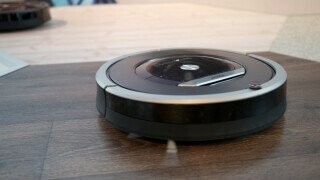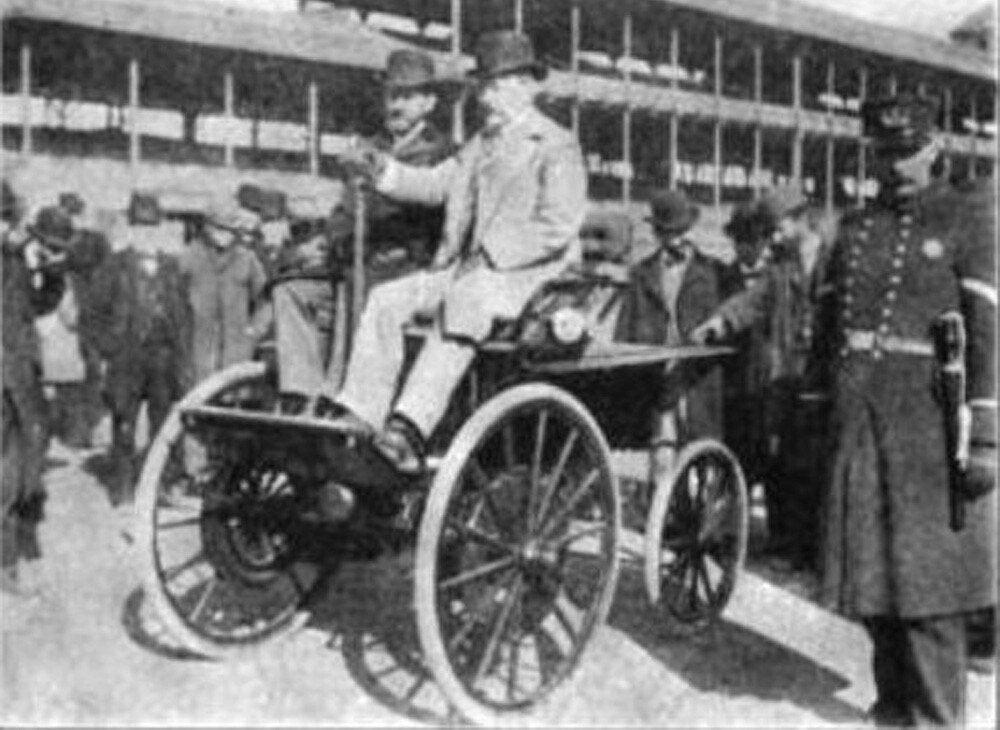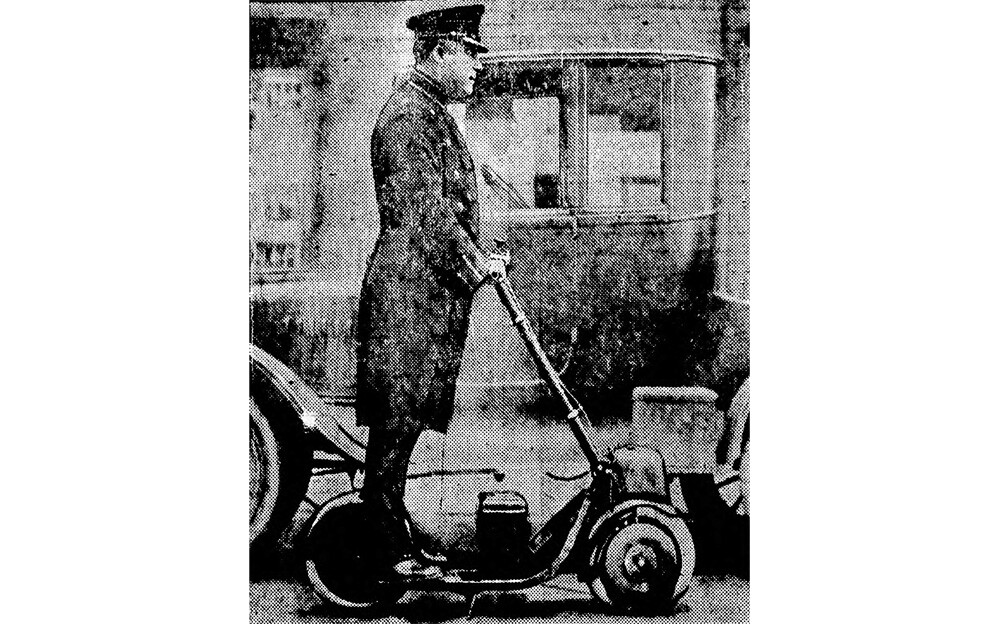5 Modern Tech Marvels (That Are Older Than You Think)

Technology has brought us a lot of cool stuff, like rocket ships and the computer you're reading this article on right now. Everything from Large Hadron Colliders to looking up porn on your smartphone exists somewhere in the 21st century. But little do people know that a few gadgets and gizmos we take for granted have actually existed for a lot longer than we think ...
Automated Restaurants And Stores Go Back To 1895
During the pandemic, hands-free humanless services became increasingly popular, with a few things like toll roads and even metro services going contactless and self-serve. Given the fact that people have been trying very hard to not die for the past two years, safe automated services have grown in popularity, with a few automatic restaurants even popping up here and there. But automated food service isn't a particularly new concept; in fact, it's over a century old.
Don't Miss
Automats, or self-serving automated restaurants, had enjoyed great popularity in the late 19th and early 20th centuries. The concept is pretty simple: a grocery store or fast-food restaurant filled with vending machines containing things like hot meals or cigarettes. These were pretty much a precursor to the fast-food industry we see today, only without any annoying mascots or gaudy colors.

Basically, you could walk into an automat, pay the appropriate amount of coins, and get whatever item that machine is serving, which was often food and drink. The first automat in the world was Quisisana, established in Berlin in June 1895 and was a huge success, so much so that many more automats soon followed suit.
What's more is that automats haven't exactly died out either, as modern versions can still be found all around the world. The pandemic just so happened to make them pretty fashionable again. Guess something about mass death, and infection rates somehow makes people want less human contact, especially with their food, we guess.
The 1950s Had Roombas Like Ours
Love them or hate them, Roombas are here to stay. No longer just a thing that single, 30-something white women living in New York own, Roombas have exploded in popularity and might actually get creepy-ass arms in the future. And while we might have come a long way from the old days of using a mop and bucket to keep our $6,000/month Upper East Side apartments spotless, Roomba technology isn't actually as recent as you think, and goes way back to the mid-20th century.
See, turns out humans always have kind of been lazy when it comes to your everyday house chores, so we came up with batshit crazy ideas on how to make our lives even lazier/easier all of the time. And that sentiment was demonstrated perfectly at the 1959 American National Exhibition, which showcased the world's first self-operating floor cleaner, as designed by Whirlpool. This cleaner was similar to modern-day Roombas, being able to clean floors autonomously and completely hands-free. There's even a video demonstration of it:
This was part of Whirlpool's "Miracle Kitchen of the Future" display, showing off other interesting technology, but unfortunately, no Wi-Fi-equipped smart fridge. Designed and patented by Donald G. Moore, it had a central console, sensors, and programmed paths that'd all work effortlessly with the push of a button.
As you can guess, this technology was very much ahead of its time and ended up being a precursor to the Roombas we all enjoy to this day. The modern Roomba would come about a few decades later, in 2002, designed by the company iRobot, but employ the same technology as the 1957 version, albeit far more sophisticated and expensive. And given how iRobot stocks are soaring right now, it's safe to say that Moore and Whirpool predicted the future fairly well. Now, if only our modern Roombas could look like something from Fallout 3 too.
Electric Cars Existed As Far Back As 1903
It seems like electric cars are just about everywhere now and keep booming in popularity as the years go by. In no short thanks to big electric car companies like Tesla, which generates as many controversies and lawsuits as it generates profits, electric cars are now hip and sexy vs. a niche thing that they used to be a few years ago. Hell, even big oil guzzler car companies are adding their own electric car lineups now to catch in on the fad and bottomless profits.
But electric cars actually aren't as recent as you think and have been in production for well over a century. It all started back in the late 19th century, when inventors Henry Morris and Pedro Salom created one of the first electric automobiles, the electrobat, to compete with the horse-drawn vehicle industry.

This idea was eventually sold to Isaac L. Rice, who started producing more electric cabs for purchase in eastern cities like New York and Boston. Then in 1903, Ford and, the bastard himself, Edison partnered up to design a new kind of car that'd operate on nickel-iron batteries and electricity. This led to a large production of electric cars in New York, with hundreds of them in use. And though they weren't as sleek as Elon's charging stations (but not coming with the feverish fanboyism that follows Tesla purchases), there were even charging stations located around the cities to plug your car into.
Of course, that swiftly ended when the same electric car taxi company made by Rice went belly up in 1907. The bankruptcy, along with a host of other problems and conflicts, helped contribute to the electric car's death, which made gas-powered vehicles the dominant king for many decades.
People Were Riding Motor Scooters Back In 1913
Nowadays, it's not too uncommon to see some douchebag riding a Segway or hoverboard down the street. And as much as these dishrags could use a good punch or two, that's not yet legal, so we'll just have to deal with them as best we can. With that being said, the electric scooter has a pretty long history of haunting the average person's existence for as far back as 1913.
The Autoped is documented as the first motor scooter ever mass-produced, coming about in 1915 and becoming instantly popular on release. Its design was laughably childish and straightforward, as it was basically a kid's scooter but bigger and with a gas engine strapped to it. Also impressive for its time is its max speed, which reportedly could hit up to 35 miles per hour. There was even an electric version made a few years later.
Unlike today's moped users, back in the 20th century, motor scooters were actually used for cool purposes, like by mafia members who used them for quick getaways down tight spots that police cars couldn't go through.

On top of that badassery, feminists also rode around on them to make a political statement and empower themselves. There's no bigger middle finger to the patriarchy than having your own two-wheeled motorized gender liberator.
3D Printers Go Back To The '80s
3D printing technology is like black magic. Spooky awesome, and complicated, 3D printers are being used for just about every little thing you can think of under the sun nowadays, like 3D printed houses, 3D printed food, and even 3D printing other 3D printers. It's only a matter of time before the inevitable Skynet-esque takeover by robots 3D printing themselves, but as cool as this technology is, it is surprisingly older than you think.
See, 3D printing technology itself came about in the 1980s, starting with a process called stereolithography. Stereolithography was first developed by Hideo Kodama, a Japanese scientist, back in 1980, and is basically a big word form a process that creates 3D printed objects and models by creating polymers out of oligomers and monomer chemicals. This is basically the process that 3D printing is founded on and what all modern 3D printers use. In caveman terms: Small things make big things.
Following that, a patent application by Charles Hull was filed in 1984, and the actual first 3D printer in the world, the SLA-1, was created in 1987. Given that it was the '80s, it was pretty big and archaic but worked just like the ones we have now. 3D printing works through photopolymerization, which involves a repetitive process in which polymers are made and cut by lasers into extremely thin layers, which are layered on top of each other one at a time until an object is fully formed.
This huge landmark in technological innovation soon gave way to a couple more decades of experimentation and development, eventually leading to the huge 3D printer boom we see today. And it's all thanks to a few eggheads in lab suits who shared a collective dream that humanity would one day be able to make dragon dildos at home. Science rules.
Top image: Kārlis Dambrāns
